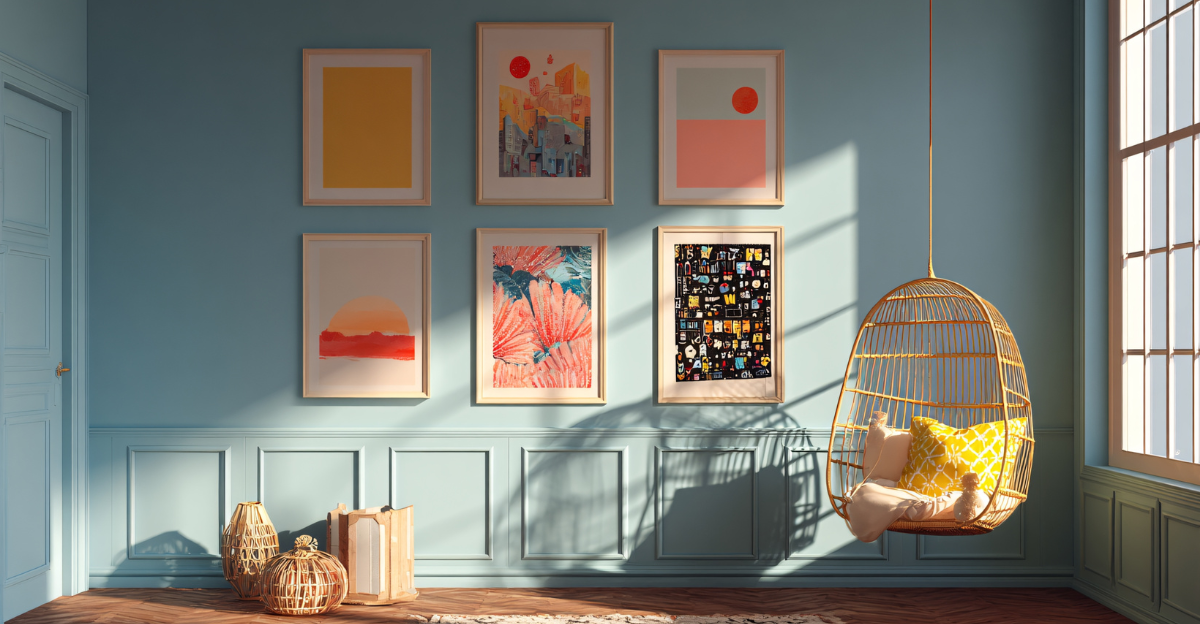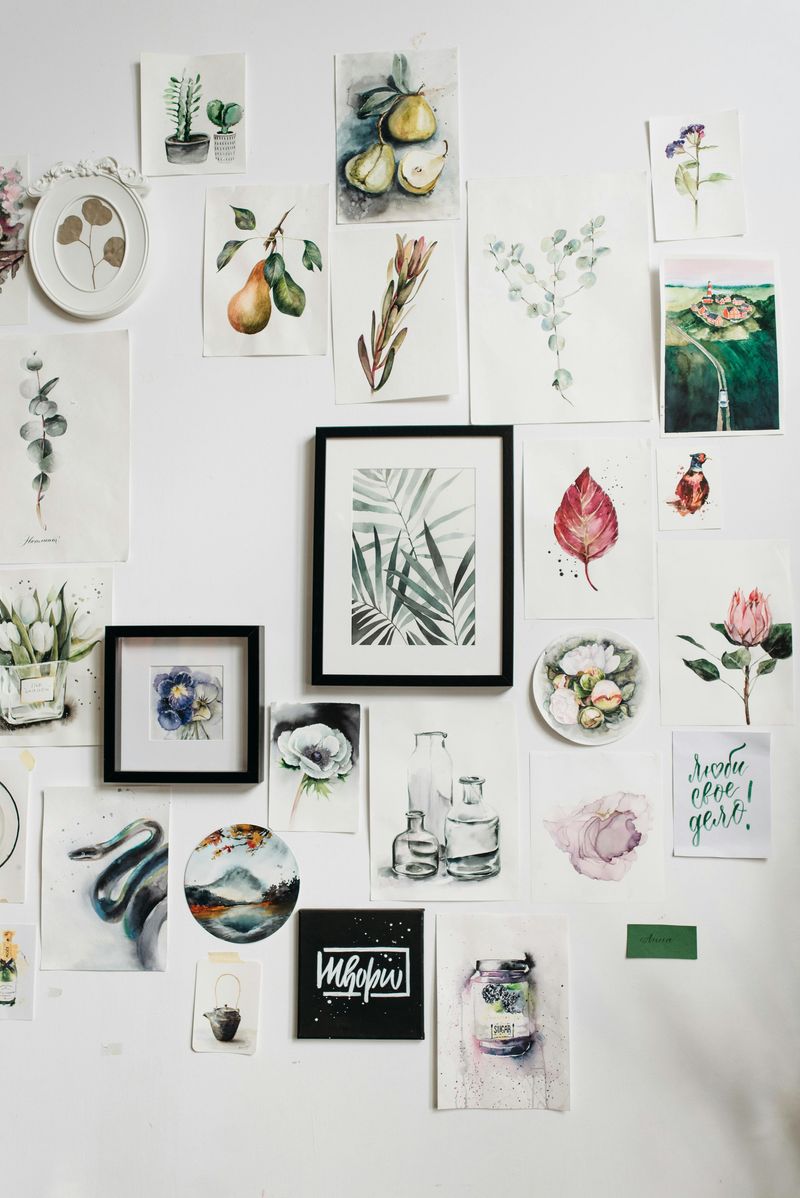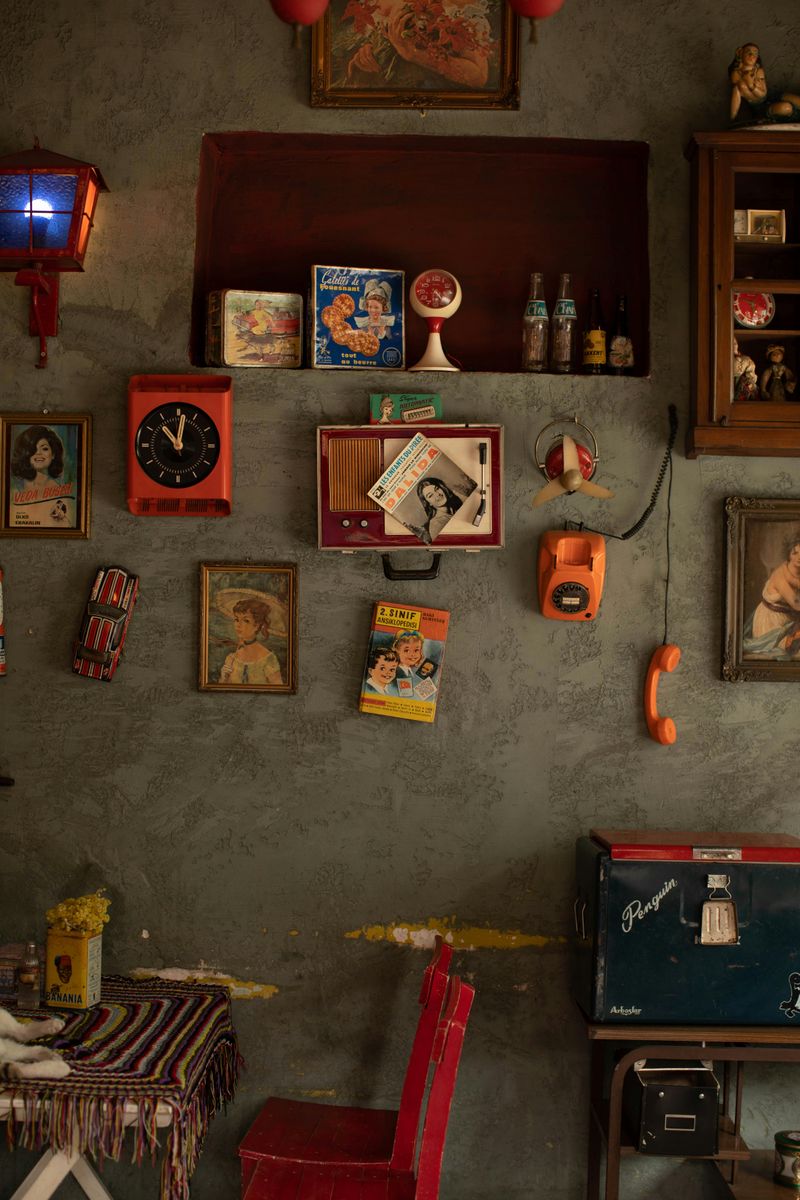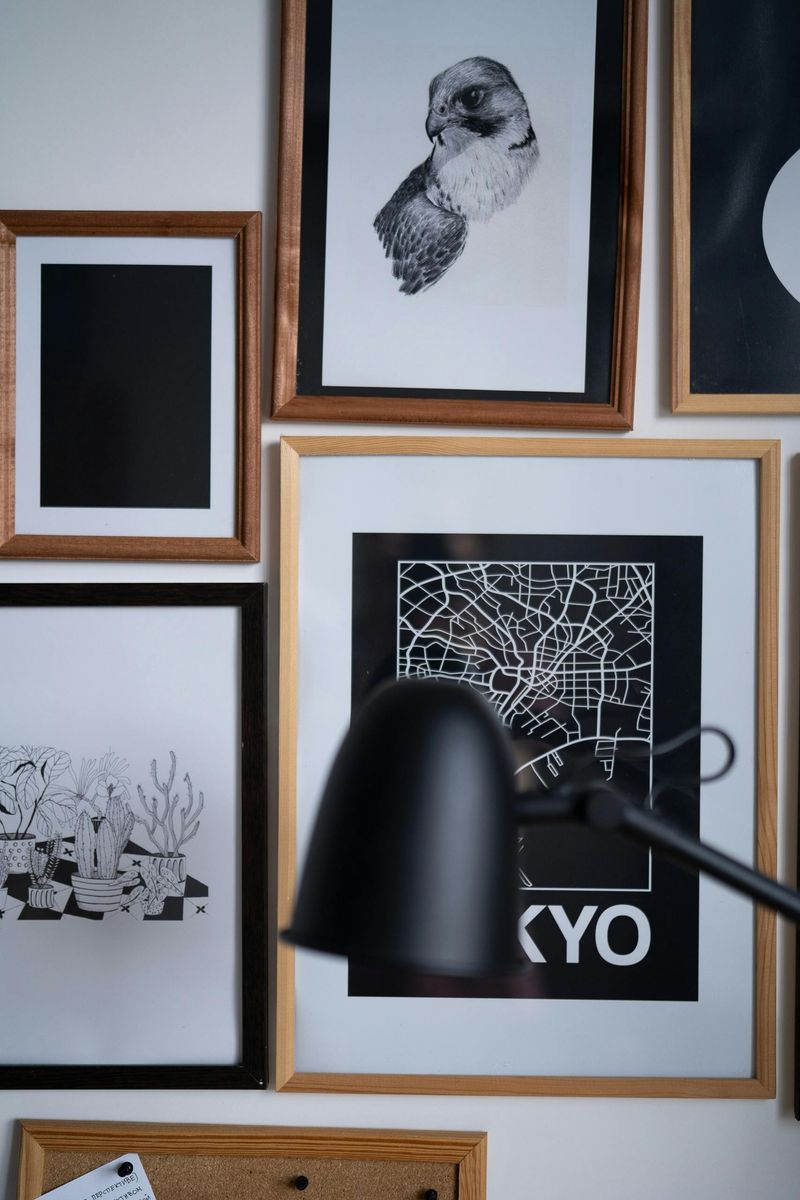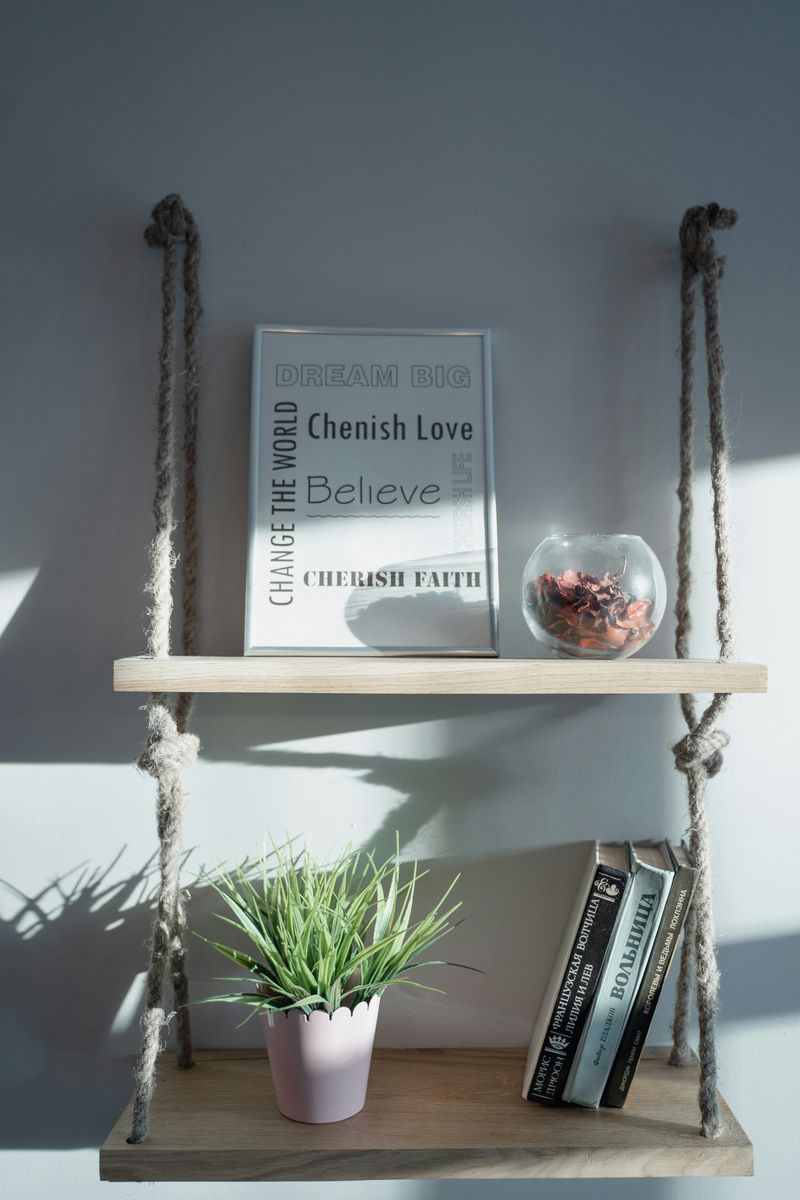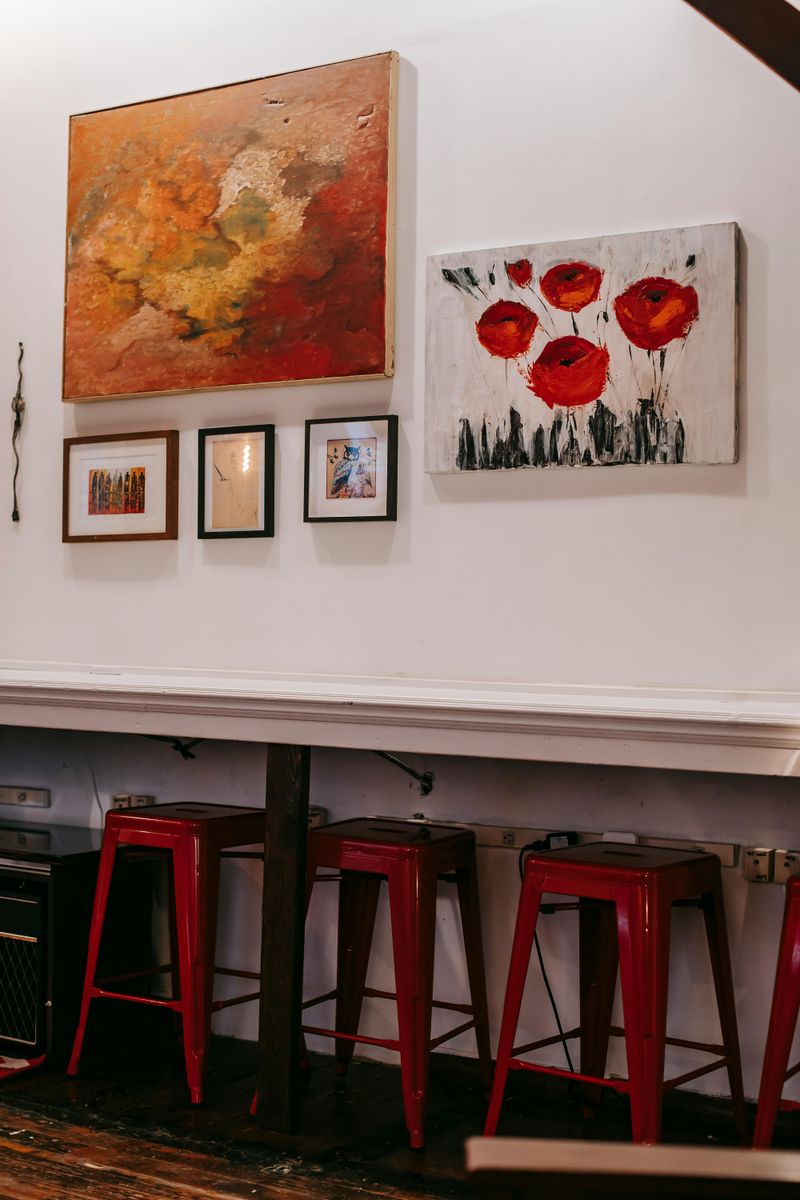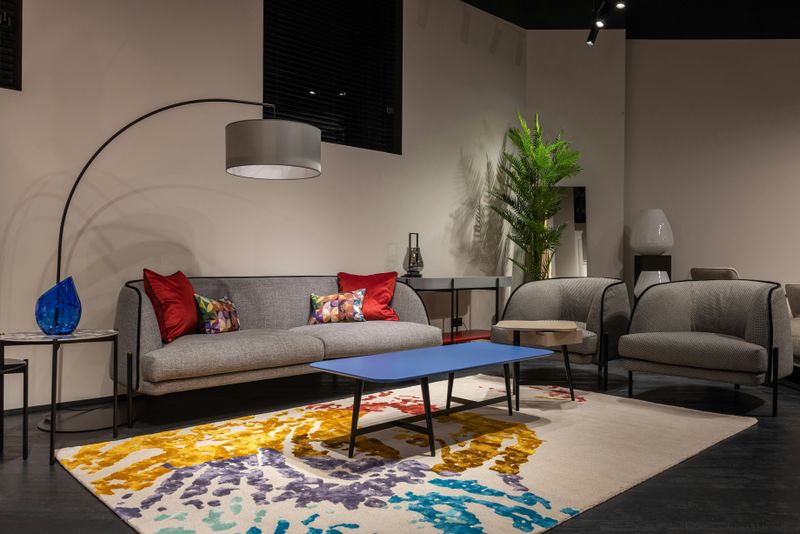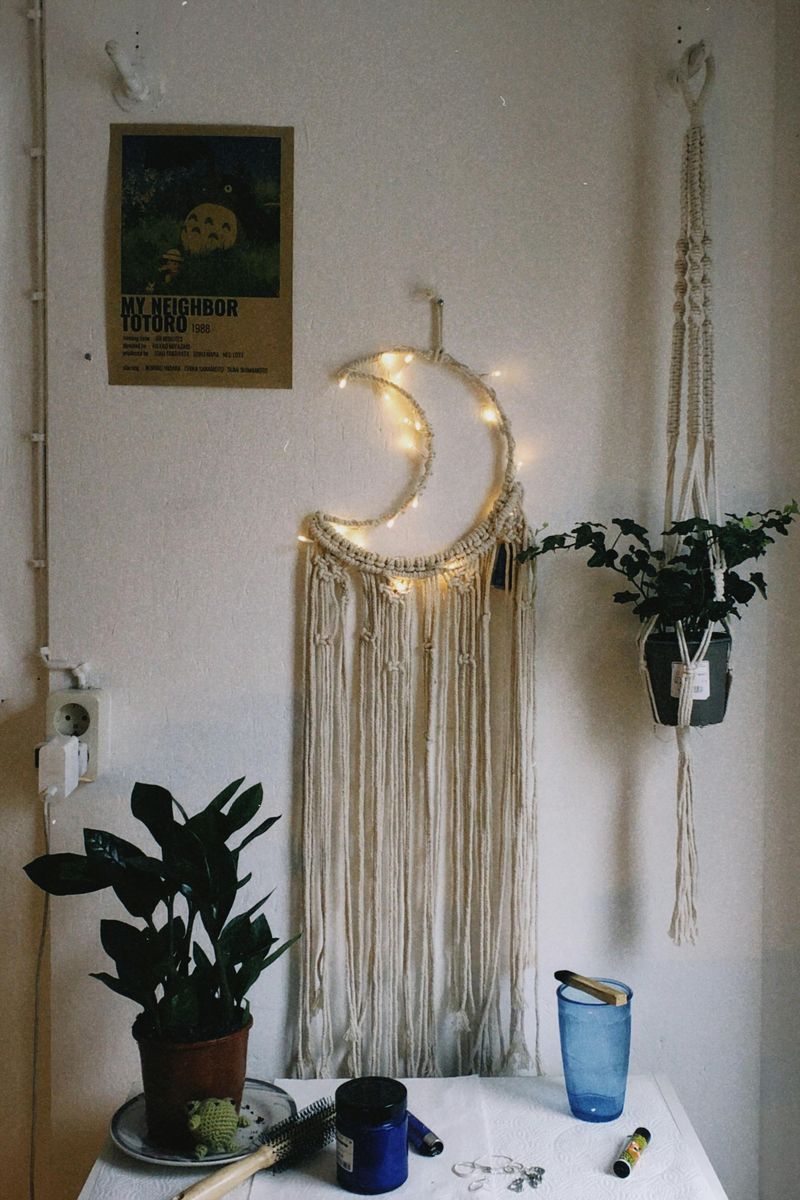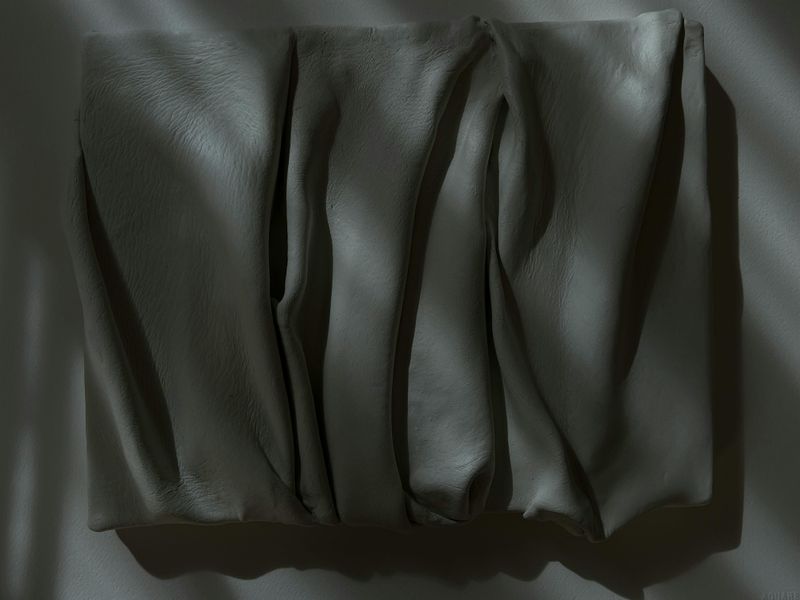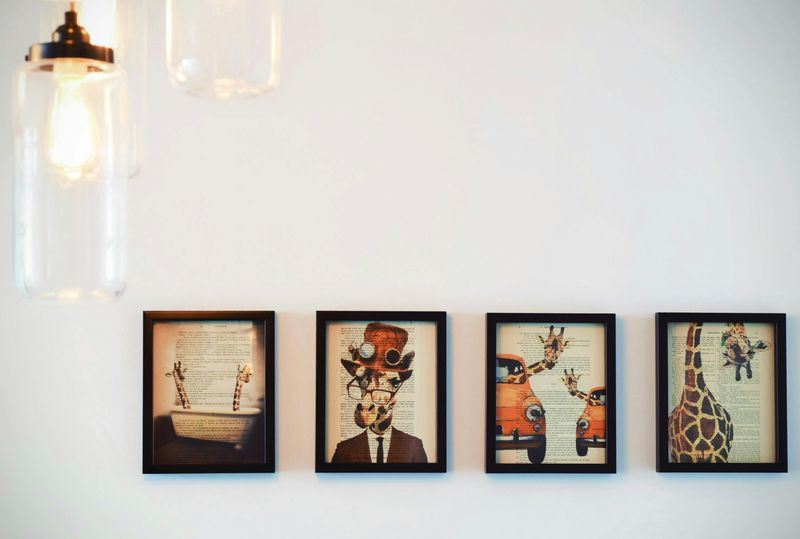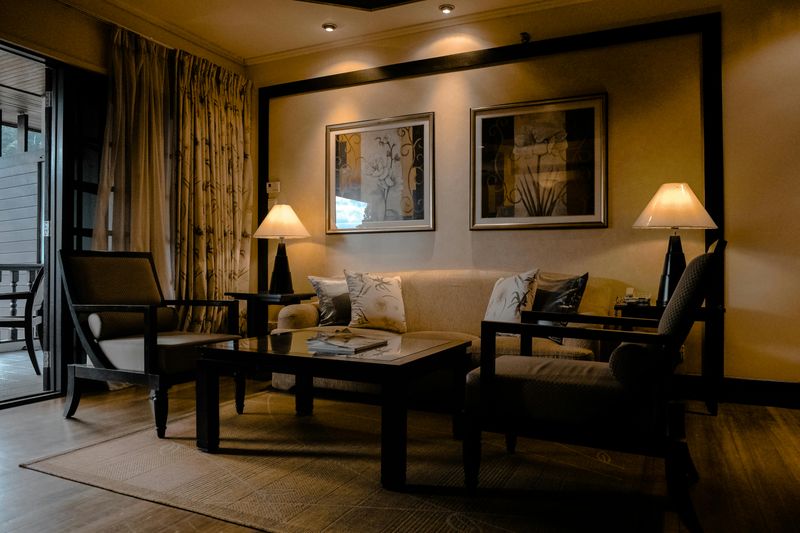Gallery walls can transform a boring blank space into something exciting and personal. But too many look cluttered or messy, making your room feel overwhelming instead of stylish. The good news is that fresh, modern gallery walls are easier to create than you think, and they don’t require fancy art or perfect spacing to look amazing.
1. Asymmetrical Grid
Forget the ruler and embrace a more relaxed approach. An asymmetrical grid mixes different frame sizes while keeping some loose alignment, creating visual interest without looking random.
Start by choosing one horizontal or vertical line to anchor your arrangement. Then build outward with frames that vary in size but share similar spacing between them.
This style works beautifully in modern spaces because it feels intentional yet casual. Pick frames in the same color family to keep things cohesive, or mix metals and woods for added texture. The beauty lies in the imperfection—no measuring tape required, just your eye and some patience.
2. Eclectic Vintage Mix
Combining old treasures creates a story on your wall that feels collected over time. Hunt for vintage frames at thrift stores, flea markets, or your grandparents’ attic, then fill them with old photos, botanical prints, or even fabric scraps.
The magic happens when you stop worrying about everything matching perfectly. Ornate gold frames can sit next to simple wooden ones, and black-and-white photos can hang beside colorful vintage postcards.
This approach gives your space character and warmth that new store-bought art simply can’t replicate. Layer in some small mirrors or antique plates to add dimension and reflect light around the room.
3. Black-and-White Only
Sometimes limiting your color palette makes the biggest impact. A strictly black-and-white gallery wall feels timeless, sophisticated, and surprisingly versatile with any decor style.
Choose photographs, line drawings, abstract prints, or even text-based art—all in monochrome. The lack of color forces you to focus on composition, contrast, and subject matter instead.
This works especially well in bedrooms and offices where you want a calming atmosphere. Mix photography styles from landscapes to portraits to keep things interesting. The frames can be all black, all white, or a combination of both to enhance the crisp, clean aesthetic you’re building.
4. Leaned Shelf Layers
Why commit to nail holes when you can change your display whenever the mood strikes? Install one or two floating shelves and lean your artwork against the wall in overlapping layers.
This casual approach feels collected and lived-in rather than perfectly staged. You can easily swap pieces in and out, which is perfect if you get bored quickly or like rotating seasonal art.
Add small plants, candles, or decorative objects between frames to create depth and personality. The key is varying the heights and sizes so everything doesn’t line up too neatly. This method works wonderfully above a console table, desk, or bed.
5. Oversized Center Anchor
Build your entire gallery around one showstopping piece that commands attention. Choose a large painting, photograph, or print you absolutely love, then surround it with smaller complementary pieces that enhance rather than compete.
This strategy creates a clear focal point and makes decorating decisions much easier. The surrounding pieces should echo colors, themes, or styles from your anchor piece.
Keep the smaller frames relatively uniform in size to avoid visual chaos. This approach works particularly well above sofas or beds where you want something substantial but not overwhelming. Your eye naturally goes to the center first, then explores the supporting cast around it, creating a satisfying visual journey.
6. Monochrome Mood
Pick one color and run with it—the results are surprisingly stunning. Whether you choose calming blues, earthy greens, or warm terracottas, sticking to one color family creates instant harmony.
Your artwork can include different shades and tones of your chosen color, from pale pastels to deep saturated hues. This creates visual interest while maintaining a cohesive, intentional look.
Monochrome doesn’t mean boring; it means thoughtful. Mix different art styles like abstract paintings, photography, and graphic prints all within your color story. The frames can match your wall color to disappear or provide subtle contrast. This technique makes even mismatched art feel like it belongs together.
7. Neutral Boho Mix
Earthy tones and natural textures come together for a warm, welcoming vibe. Combine framed prints in beiges, creams, and taupes with woven baskets, macrame hangings, and maybe a small shelf holding dried flowers.
The beauty of this style is its organic, relaxed feeling—nothing looks too precious or untouchable. Choose art featuring line drawings, abstract shapes, or nature-inspired subjects that complement the neutral palette.
Texture is your secret weapon here, so mix smooth framed pieces with rough woven elements. This creates dimension without needing bright colors. Perfect for creating cozy corners in bedrooms, reading nooks, or anywhere you want that effortless, collected-over-time aesthetic.
8. Salon-Style Chaos (Done Right)
Embrace maximalism by covering your wall nearly edge to edge with frames of all sizes. Salon-style hanging originated in fancy European art galleries where every inch of wall space showcased something beautiful.
The trick to making this work is keeping some element consistent—maybe all gold frames, or sticking to one subject like landscapes or portraits. Without some unifying thread, it becomes genuinely chaotic rather than artfully arranged.
Start in the center and work your way outward, keeping spacing tight and consistent. This bold approach works best on larger walls where you really want to make a statement. It’s dramatic, confident, and definitely not boring.
9. Sculptural or 3D Accent Pieces
Flat art is great, but adding dimension takes things to another level. Break up your framed pieces with sculptural elements like metal wall art, ceramic plates, small shelves, or even mounted plants in wall planters.
These three-dimensional accents catch light differently throughout the day, creating shadows and visual interest that changes with the sun. They also give your eye somewhere to rest between busier framed pieces.
Don’t go overboard—one to three sculptural pieces mixed among your frames is usually plenty. Choose pieces that complement your color scheme and overall style. This technique transforms a standard gallery wall into something truly unique and personal that feels more like an art installation.
10. Art-Led Color Story
Let your favorite piece of colorful art dictate the entire wall’s palette. Pull out three to five colors from that anchor piece, then choose all surrounding art based on those specific shades.
This method creates incredible cohesion even when your art styles are completely different. A modern abstract print can sit beside a vintage photograph because they share the same dusty pink and sage green tones.
Frame colors should either match the wall to disappear or echo one of your chosen accent colors. This approach requires patience when collecting pieces, but the payoff is a gallery wall that looks professionally curated. Your space will feel intentional and pulled-together without seeming too matchy.
11. Two Large Statement Pieces Side by Side
Sometimes less really is more. Instead of dozens of small frames, hang just two large pieces side by side for a bold, minimalist statement that feels sophisticated and current.
Choose pieces that complement each other—maybe matching sizes in similar frames, or two halves of a diptych. They can share colors, themes, or styles, but they don’t need to match exactly.
This approach works beautifully above king-sized beds, long sofas, or in dining rooms where you want impact without visual clutter. The simplicity lets each piece really shine and makes your space feel more expensive and curated. Plus, you only need to hammer two nails instead of twenty, which is always a win.
